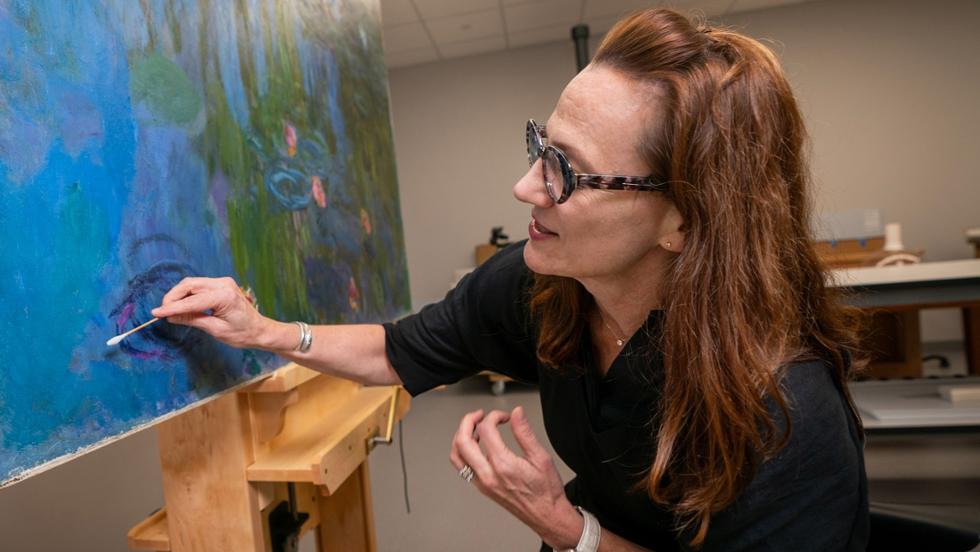
The tranquil Impressionist work measures about 5 feet by 6 feet, but on a good day this precise and patient scholar, wielding a cotton-tipped bamboo skewer, cleaned a portion of the canvas that measured only 3 inches by 3 inches.
“I work carefully because I have as a guiding principle that I don’t want to cause any damage to the artist’s material,” said Ameringer, whose career has taken her from San Francisco’s Fine Arts Museums to Atlanta’s High Museum and the Museum of Fine Arts in Boston before landing in Oregon.
At Hamilton, the psychology major started out thinking she’d become a doctor like her parents. Though her career choice at first disappointed them, she now jokes that instead she became a doctor of artwork. Organic chemistry fascinated Ameringer, and that knowledge dovetails with her work. Because of the unique composition of an artist’s paint and the varnish, she must mix her solvent to ensure it dissolves only the unwanted coating and not the paint below.
“Sometimes I spend more time with an artwork than the artist did. This incredible intimacy with the act of creation and the painting itself is part of what I love about the job.”
“You lose a lot of the lovely, subtle, more pastel tones when you put a varnish on something,” Ameringer said. “What I do is a very customized thing. There’s a lot of fine-tuning of the solvent type to get something that works just right.”
What other paintings has she revived from grime or misguided attempts at preservation? “I’ve been doing this for 25 years. Name an artist, and I’ve probably worked on a piece by him or her,” she said. “Sometimes I spend more time with an artwork than the artist did. This incredible intimacy with the act of creation and the painting itself is part of what I love about the job.
“It gives me goosebumps to think how good Monet was at age 73 when he painted this. He knew exactly what he wanted to do.”
Posted July 10, 2025




